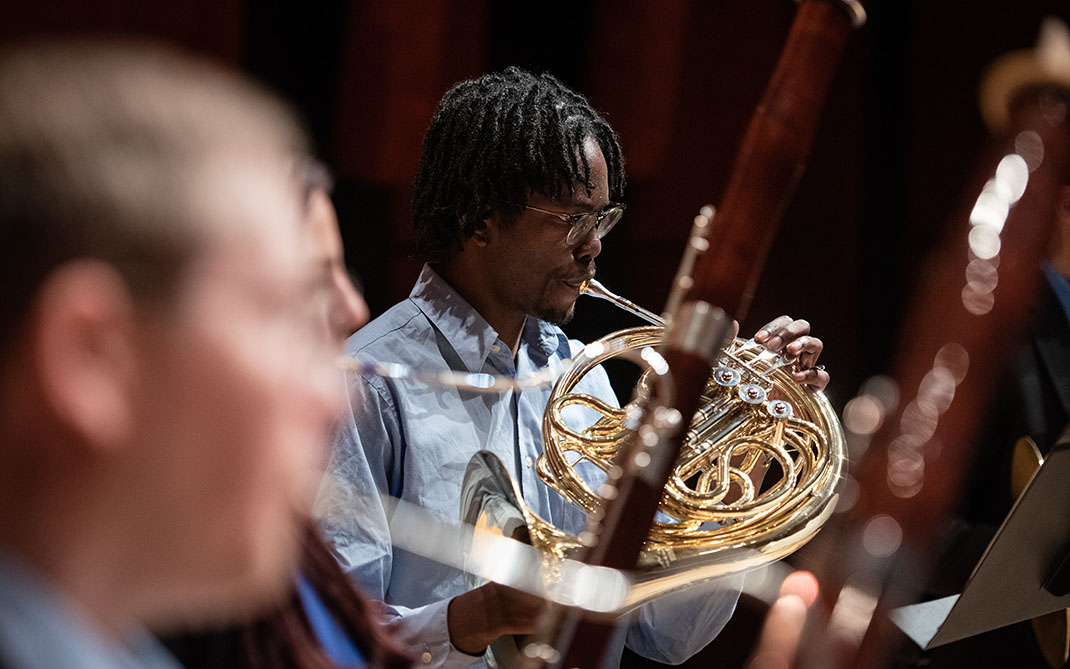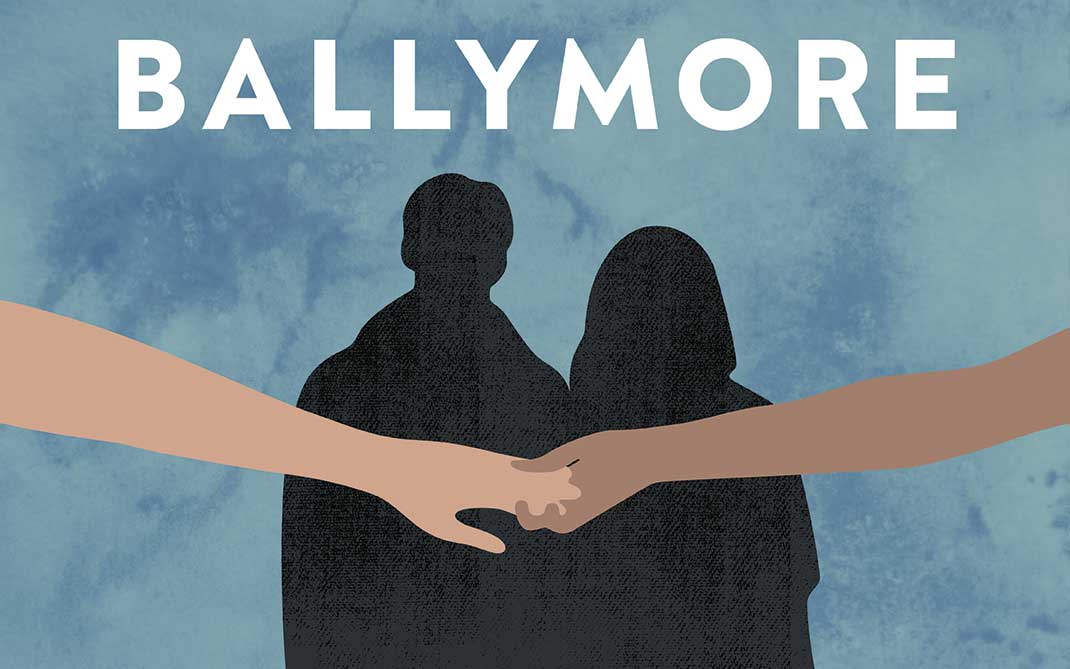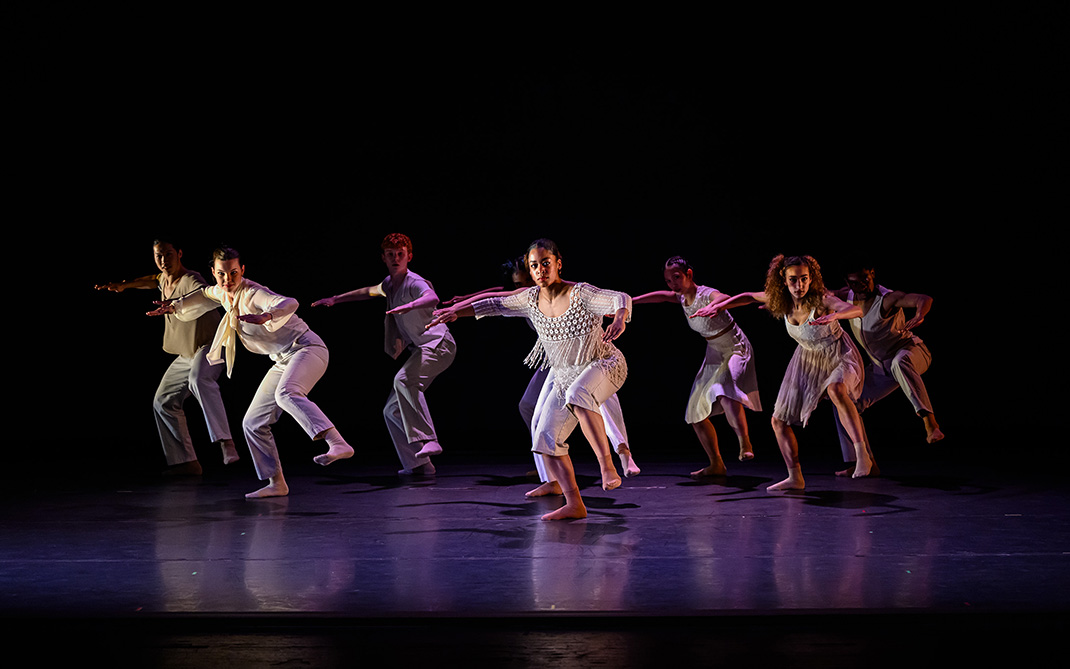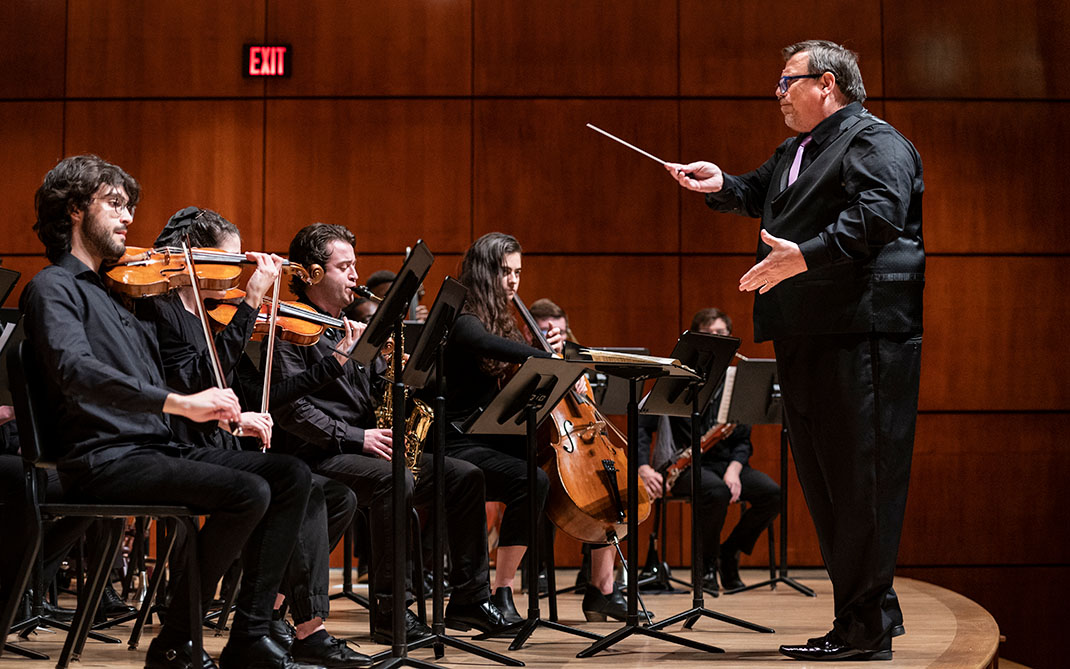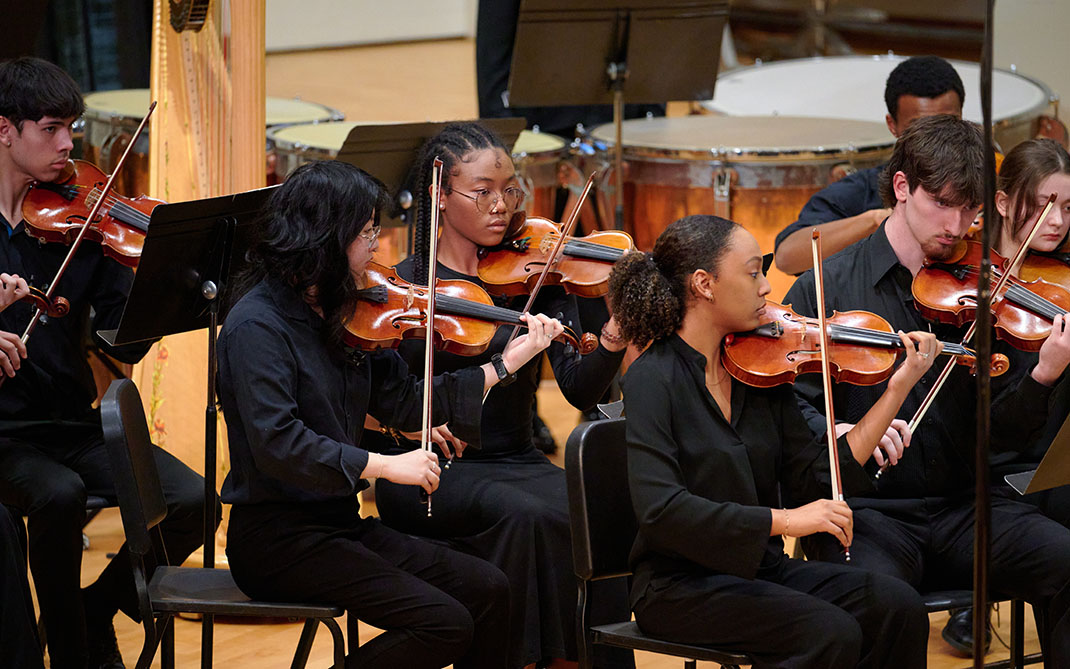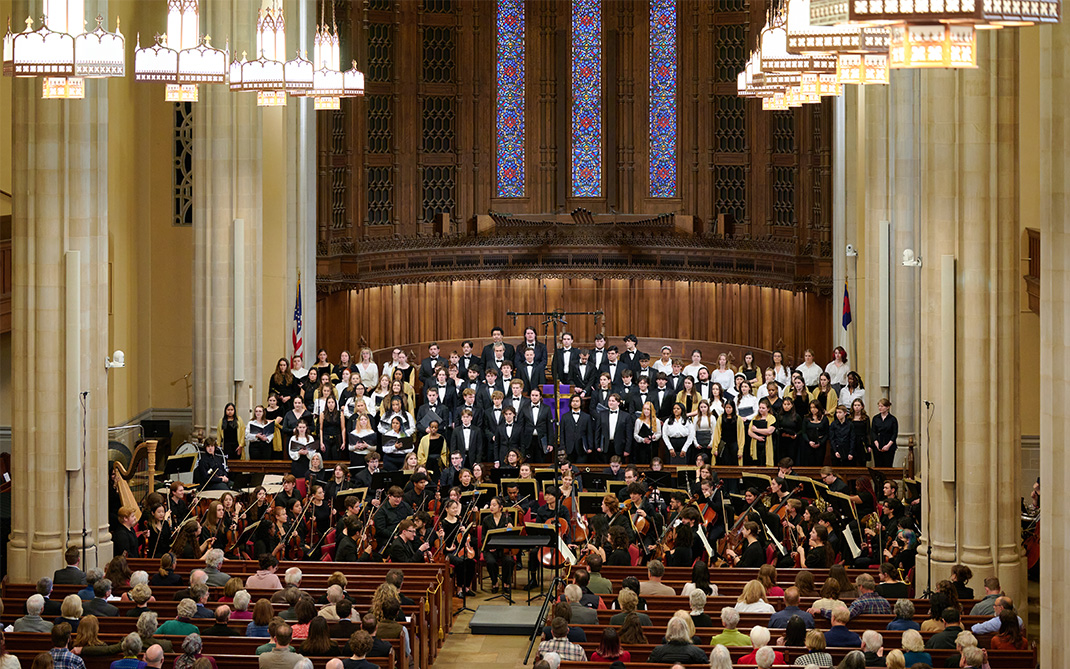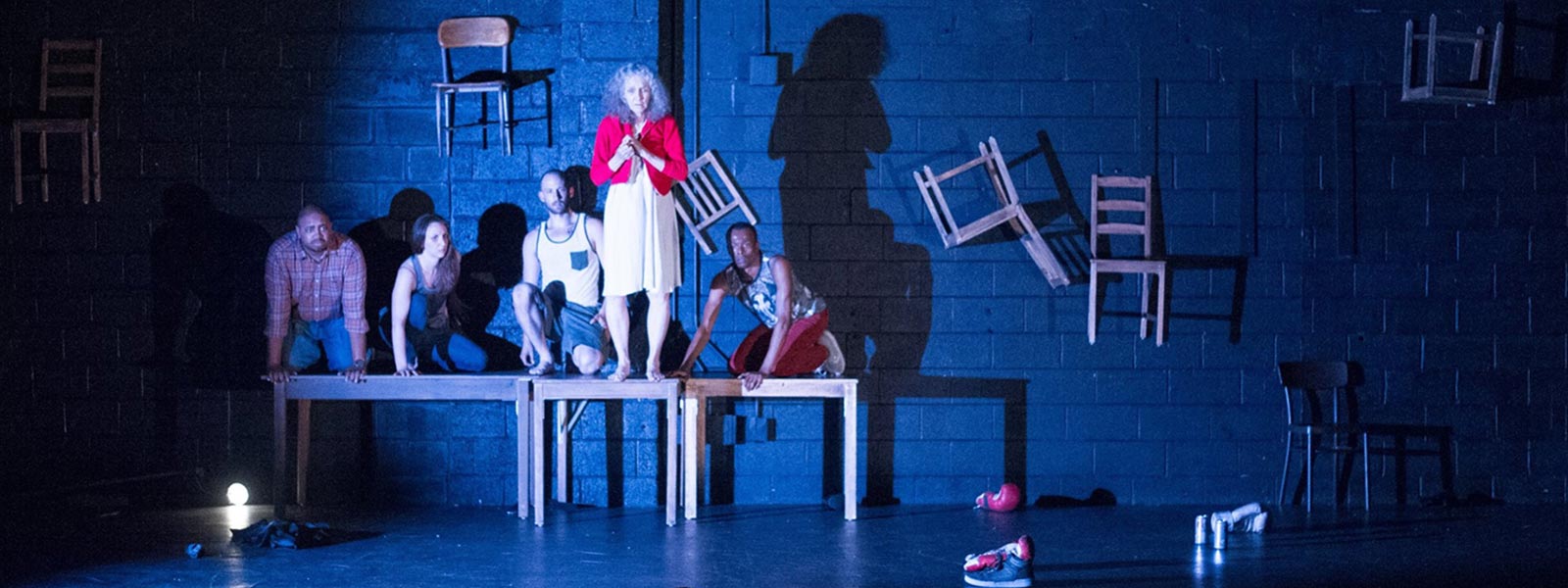Devised Theater creates a spark in Drama curriculum
Sam Sherman, a third-year college student studying acting in the School of Drama at UNCSA, is struggling to define his Jewish identity. Jasper Keen, another acting student at UNCSA, is exploring questions about his father.
Sherman and Keen’s vehicle for engaging with these challenges has emerged in a class on Devised Theater taught by Andy Paris, an Emmy-nominated writer, actor and director. In part, the class uses Moment Work, a highly experimental but increasingly common technique for theatrical exploration and interdisciplinary collaboration.
Paris began teaching Devised Theater at UNCSA in fall 2018 when Drama Dean Scott Zigler incorporated it into the acting curriculum. Earlier in his career, Paris helped develop Moment Work, which he then used to co-create the 2000 production of “The Laramie Project,” a signature work of the Tectonic Theater Project. He also helped write “Moment Work: Tectonic Theater Project’s Process of Devising Theater” (Vintage Books, 2018).
New languages for theater
Moment Work proposes that there are numerous “languages beyond words” to create “theatrical narratives that generate riveting and profoundly intimate dialogues with an audience.” These narratives draw on such elements as lighting, sound, body movements, props, costumes, conventions and surprise. Also, as Paris stresses, devised work often generates a script but does not begin with someone writing down a play and then entrusting a director to lead an interpretative performance of it.
“There are more and more companies that are working in this manner,” Paris says. “Many directors expect actors to be able to work this way.”
Zigler agrees. He is bullish on Devised Theater’s future in the United States and wants to prepare Drama students for it. He notes that many devising theater companies from the 1960s, including The Living Theatre and The Open Theatre, paved the way for processes of devised theater to thrive in such companies as Mabou Mines, The Wooster Group, The Rude Mechanicals, Pig Iron, The Civilians, The Team and Elevator Repair Service.
As Devised Theater is probably the fastest growing type of production being done in the American theater, it makes sense that students should enter the profession with the skills necessary to participate in this kind of work.
Scott Zigler
As Devised Theater “is probably the fastest growing type of production being done in the American theater, it makes sense that students should enter the profession with the skills necessary to participate in this kind of work,” Zigler says. “It also empowers students to create their own work and form their own companies.”
Empowering work for student-artists
Both Keen and Sherman appeared empowered during a recent class on Devised Theater.
The piece of devised theater Keen is working on includes singing and spoken text. It begins with three men lying, as if asleep, in a darkened room. In time, the men rise and all approach a large lit piece of paper. One man stands in front of the paper and the two other men sketch his outlines on the paper.
As for Sherman, he is working on “Sands,” which he described as an extension of how he struggles with his Jewish identity. He says that portions of “Sands” were inspired by his second trip to Israel in 2014, and by his thoughts on the word mitzrayim (literally “narrow place”), the Hebrew name for Egypt in the Torah.
In “Sands,” conventions emerge through patterns involving such elements as sound, light, movement and text. A pair of actors lock together closely, with each repeatedly performing mirror images of the other’s choreographed steps and poses in a process Sherman calls scanning-movement. The scanning-movement in “Sands” is affected by changing soundtracks, and a pattern of light changes affects both the scanning-movement and the soundtracks.
“In the mix of all of that, the audience has the opportunity to develop their own narrative around what’s being shown,” Sherman said.
Sherman said that Paris’ class on devised theater had impacted him the most in two areas: artistic empowerment and the breaking down of elements of theater.
“With regard to the former, he always emphasizes bringing in work that speaks to us, the students, on a personal level,” Sherman says. “He believes that the stories we have within us are worth being shared and explored, and experimented with.”
Paris echoes these sentiments, saying his students “are starting with what’s important to them.”
As for breaking down the elements of theater, Paris “has introduced me to the idea that devising can function as a method of theatrical research, from which I can build moments by playing with broken-down elements of performance,” Sherman says.
Zigler cited many other benefits of Devised Theater.
Collaboration for actors
Devising “is particularly good at deepening the students’ collaborative skills,” he says. “It also encourages them to bridge the gap between performing interpretive artist and creative artist. There is a sense of ownership of the work that performers just don’t have when performing in someone else’s writing. Devising also encourages actors to sharpen their skills in creating and employing physical theater practices, and making work with their whole body.”
“And it also compels them to look at work from a more dramaturgical perspective,” he adds, “taking into account the effectiveness of the overall narrative structure. This is incredibly important for the actor, and often lacking in traditional acting training, where the actor’s perspective is often shaped by looking at a character, rather than the role the character plays in the overall story. When actors begin focusing on storytelling and structure rather than simply interpretation of character, their work and their contribution to the collaborative process becomes much more effective.”
January 17, 2019
